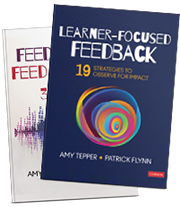The day when many of us turn the clocks is approaching and we couldn’t be happier. For us, it is not about the loss of an hour of sleep, but the prospect of more light and warmth on the horizon…and we start celebrating well in advance and announcing it to anyone who will listen. But it also signifies a shift, hope, and promise…things we all could use these days.
A friend shared a poem this week that inspired us and our love for springing forward and spurred our thinking about what principals are currently experiencing in our schools.
We reflected on the conversations we have had over the last few weeks with the principals we coach. All year, they have been planting seeds. There is a life force in motion in their buildings, a growth and expansion nearly imperceptible to the eye, yet they are feeling ineffective and not recognizing the impact or tiny successes they are having.
We heard:
“I am not able to spend time supporting the SRBI work…”
“With all of the snow days and changes with the schedule, I haven’t gotten to provide feedback.”
“I am not as purposeful as I would like…”
But at the same time, these same principals shared that staff feel safe, students are seamlessly returning to school, and teachers are using professional learning. So, we asked the important questions, “How did that happen?” “How did you create/cultivate those outcomes?”
Time, Time, Time, See What’s Become of Me
The pandemic has tested all principals. One of the most important investments we can make right now is in building their efficacy and to help them think deeply about what is occurring and why. As we build capacity in “high leverage skills,” we must help them learn how to identify impacts of their daily actions in the immediate and with an eye on the future answering:
- What is having a positive impact so that we can replicate and maintain?
- What is not having a positive impact and needs to be abandoned or that we no longer need?
- What can be adapted?
The Wallace Report How Principals Affect Students and Schools, a synthesis of research released in February, reinforces what we have long witnessed:
“An effective principal’s impact is stronger and broader than previously thought, making it “difficult to envision” a higher return on investment in K-12 education than the cultivation of high-quality school leadership.”
They remind us that principals create the conditions for learning to occur.

Shoots Up Through the Stony Ground: Seeds and Steps Have Impact
While reflecting on impacts on staff, the responses have not been “teacher evaluation ratings rose.” They are able to identify observable changes in staff, students, and families since the beginning of the school year. This is what matters.
And though we are the first to say, assessment/monitoring of performance is critical, and measurable and academic growth imperative, we cannot shy away from collecting and responding to anecdotal evidence that demonstrates or leads to the conditions for success.
We were inspired by TeachThought’s infographic “20 Signs You Are Actually Making a Difference as a Teacher” and realized leaders need help seeing signs that reveal they are making a difference for their staff. We started to organize the signs principals were sharing. We created a Google interactive slide of the first draft with moveable tokens and asked a team of principals to reflect in small groups, creating their own coding system to share with each other about what they were noticing. But, the key was that they had to identify their role in the outcome or what actions they were taking to create or cultivate those.
The conversations were amazing. They were able to name and celebrate positives, shared ideas, and were comfortable theorizing and planning about ones they didn’t see or hear YET.
This led to the completion of our new infographic and learning tool “25 Signs Leaders Are Having a Positive Impact on Staff”
Notice how many look-fors are related to engagement, climate and culture, trust and collaboration–and support student well-being and growth. And consider, these identified outcomes are occurring in a pandemic.
You Can Spring Ahead
The Wallace report identified 4 categories that research suggests are most central to effective leadership.
- Engaging in instructionally focused interactions with teachers
- Building a productive climate
- Facilitating collaboration and PLCs
- Managing personnel and resources strategically
The principals we coach were not even realizing until we reflected together that they were engaging in critical behaviors aligned to these four findings. These leaders were:
- Proactive and purposeful (and during a pandemic this is no small feat). They are reflective with an eye on the future even while reacting each week to changes and making complex decisions related to public health.
“By organizing data in this way in a more usable format, it will help them in their PLCs when I cannot attend [because of the schedule].” “It will also help with class rosters/ recommendations for next year.”
- Optimistic
“I have told my staff this is our opportunity for innovation.”
- Committed to vision and mission
“I want my staff to be comfortable using data.”
“Right now, team leaders manage, but I would like them to become facilitators.”
The Wallace Report validates that we must engage and empower our leaders through learning opportunities and feedback cycles that allow them to identify behaviors that are and are not having a positive impact on students or staff. This allows them to reflect on their role in cultivating the short- and long-term outcomes they are seeking as they lead learning in their schools. With this focus, we support their self-efficacy and make their leadership visible. As you spring forward in the upcoming months, seek ways to water the seeds planted and build on the steps taken with your teams.
(A humble thanks to the highly effective principals who inspired us this month in Suffield, New Milford, North Branford, Hartford, Bethany, and Region 1 Public Schools.)
Need further guidance? Contact us directly and check out our resources and new webinars on our site
Let’s stay connected – Sign up for our mailing list
Twitter: Amy @ATep46 Patrick @ReVISION_Learng
Order our books Feedback to Feed Forward: 31 Strategies to Lead Learning and Learner-Focused Feedback: 19 Strategies to Observe for Impact today!




Leave a Reply